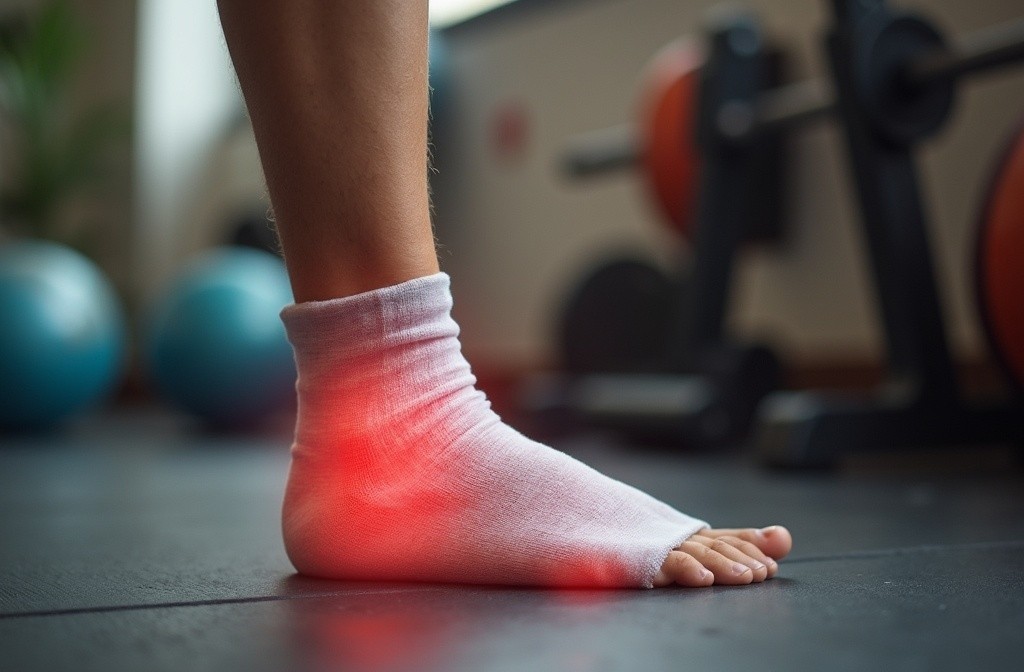Swollen ankles can be a source of discomfort and inconvenience, often impairing daily activities and leading to further complications if left untreated. Whether resulting from an injury, prolonged standing, or underlying medical conditions, understanding how to manage and treat this common issue is essential. By exploring a variety of treatments ranging from medical interventions to natural remedies, you can find the most effective solutions tailored to your specific needs.

Understanding Swollen Ankles
Swollen ankles, medically referred to as ankle edema, can be attributed to various causes such as injury, inflammation, or underlying health conditions like heart disease, kidney disease, or venous insufficiency. In many cases, the swelling is due to an accumulation of fluid in the tissues surrounding the joint. One common cause of swollen ankles is a sprained ankle, which occurs when the ligaments are stretched or torn. For more detailed information on sprained ankles and their treatments, you can visit the Mayo Clinic's official page.
Best Swollen Ankle Treatments
There are several effective treatments for swollen ankles, depending on the underlying cause:
- Rest and Elevation: Rest is crucial in reducing swelling, particularly after an injury like a sprain. Elevating the ankle above heart level can also help reduce fluid accumulation and speed up recovery.
- Ice Therapy: Applying ice packs or cold compresses to the affected area can significantly reduce swelling and alleviate pain. Use an ice pack wrapped in a cloth and apply for 15-20 minutes every hour as needed.
- Compression: Wearing a compression bandage or ankle wrap helps decrease swelling by preventing fluid from accumulating in the tissue. Make sure the bandage is snug but not too tight to avoid impeding circulation.
- Medication: Over-the-counter anti-inflammatory medications, like ibuprofen and naproxen, can help manage pain and inflammation. Always consult your healthcare provider before starting any medication to ensure it’s appropriate for your condition.
- Physical Therapy: In cases of severe injury, physical therapy may be recommended to strengthen the ankle and restore mobility. Therapists can guide specific exercises that promote healing and prevent future injuries.
Professional Medical Treatments
If home remedies and over-the-counter solutions are ineffective, medical treatments might be necessary:
- Prescription Medications: Depending on the severity and cause of the swelling, doctors might prescribe stronger anti-inflammatory drugs or diuretics to help reduce fluid retention.
- Corticosteroid Injections: For persistent swelling due to inflammation, corticosteroid injections can provide rapid relief. This treatment is typically administered by a healthcare professional and is effective in targeting inflamed tissues.
- Orthopedic Consultation: An orthopedic specialist might be consulted for chronic or severe cases. They can assess the need for braces, casts, or even surgical intervention if necessary.
How to Naturally Help Ankle Injuries
In addition to conventional treatments, many natural remedies can help soothe swollen ankles:
- Herbal Remedies: Arnica gel and aloe vera have anti-inflammatory properties that can reduce swelling when applied topically. Essential oils like lavender and eucalyptus can also promote circulation and relieve pain.
- Epsom Salt Baths: Soaking the affected foot in an Epsom salt bath can help draw out excess fluid and reduce swelling. Epsom salt, rich in magnesium sulfate, aids in relaxation and pain relief.
- Diet and Hydration: Consuming a balanced diet rich in magnesium, potassium, and vitamin C can help reduce fluid retention. Staying well-hydrated also assists in flushing out toxins and preventing swelling.
- Yoga and Stretching: Gentle yoga poses and stretching can improve circulation and promote healing. Poses such as legs-up-the-wall can facilitate fluid drainage from swollen ankles.
Preventing Swollen Ankles
Preventing swollen ankles largely depends on lifestyle adjustments and maintaining good health practices:
- Regular Exercise: Engage in regular physical activity to improve circulation and strengthen the leg and ankle muscles. Low-impact exercises like swimming or cycling are beneficial.
- Footwear Choice: Wearing supportive shoes can prevent unnecessary strain on the ankles. Avoid high heels and opt for well-fitted shoes with adequate arch support.
- Avoid Prolonged Standing/Sitting: Taking frequent breaks if standing or sitting for extended periods can prevent fluid accumulation. Move around or elevate your feet whenever possible.
For more extensive information regarding swollen feet and ankles and to explore additional home treatments, consider looking at resources provided by the Cleveland Clinic.
When to See a Doctor
While many cases of swollen ankles resolve with at-home treatments, certain conditions warrant professional medical attention:
- Persistent swelling lasting more than a few days or worsening over time.
- Severe pain that doesn’t improve with over-the-counter painkillers.
- Signs of infection like redness, warmth, or fever around the affected area.
- Any swelling accompanied by chest pain or shortness of breath, which may indicate a serious health issue.
In such scenarios, it's critical to consult with a healthcare provider to identify the underlying cause and receive appropriate care. To understand more about various sprained ankle symptoms and when professional consultation is necessary, refer to the Cleveland Clinic's comprehensive guide.
By understanding the root causes and exploring diverse treatment options, managing swollen ankles effectively becomes an achievable task. Prioritizing health, using preventive measures, and knowing when to seek medical advice are key steps toward comfort and recovery.




